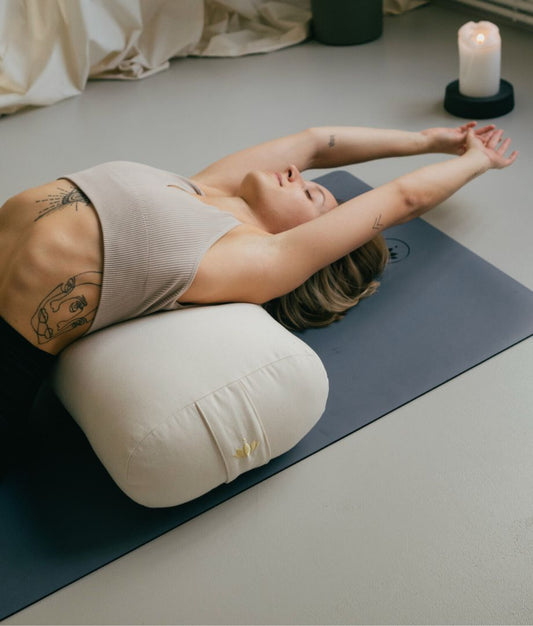
Set-Offers
Save when you buy a set
Shopping cart
Your shopping basket is empty
Yoga
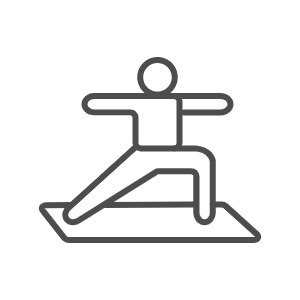
Meditation
Yoga Sets
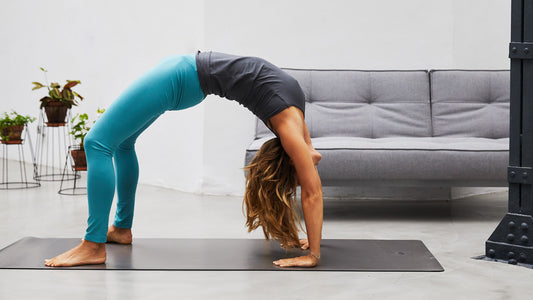
| Yoga
Kundalini, Hatha, Yin, Bikram - the variety of yoga styles can easily overwhelm beginners, especially since one cannot really imagine much under the Indian Sanskrit terms. There is also no fixed number of types of yoga, because existing styles are constantly being developed and modified. It doesn't hurt to take a closer look at the most well-known variants of yoga and their little peculiarities!
The classic hatha yoga deserves special attention because it is the variant that we have in mind when we talk about yoga. Downward facing dog, sun salutation and Co. are asanas that everyone has probably heard of before.
So typically we associate physical exercises with hatha yoga, but actually the asanas are just a part of the hatha style. Nutrition, deep relaxation and meditation are just as important in traditional hatha yoga.
The term is composed of two substantive opposites, namely sun ( ha ) and moon ( tha ). In other words, hatha yoga brings together heat and coolness, power and stillness . This happens by harmonizing the physical exercises with breathing.
This yoga variant is ideal for beginners , because the difficulty of the exercises only increases over time and you don't have to be a professional to get started with Hatha Yoga. For example, we often do some stretching exercises quite unconsciously in everyday life.
Regular yoga is very beneficial for physical health, but yoga wouldn't be yoga if it didn't also include mental well-being. There are some yoga styles that have a particularly relaxing effect, so that stress soon has no chance and it is much easier to simply switch off and consciously take a short break.
Yin Yoga is very calm: Most of the exercises are performed while sitting and lying down . This is already expressed by the name, because Yin is the Chinese symbol for femininity and calm.
In contrast to this is the male yang, which is left out in this yoga variant.

A Yin Yoga unit is relaxing - but it doesn't work without patience , because the exercises are usually held for several minutes. Staying still is not that easy, but if you manage to fully engage in it, you will leave the yoga class deeply relaxed.
This type of yoga is based on the theory that there is a power source (kundalini) in every human being at the end of the spine. Coiled up there like a snake, this force is meant to be awakened in the yoga session so that it can snake up the spine and arrive at the apex, the 7th chakra. So the focus is on the pelvic and back area .
In Kundalini Yoga, too, the asanas are held for a long time and mainly take place in a sitting position. In addition to the physical exercises, breathing techniques and mantras that induce a meditative state are also very important.
This variant is even more relaxing, but not necessarily easier: In Yoga Nidra there is only one exercise, called Nyasa. The point here is to meditate on certain areas of the body and to fully immerse yourself in this state of conscious perception.
Anyone who concentrates fully on the practice achieves deep relaxation, which is often also called “conscious sleep” . In fact, quite a few yogis actually fall asleep, which is also part of the experience of this type of yoga.
While Hatha Yoga gently leads to the practice, Ashtanga Yoga really gets down to business: A unit consists of a dynamic sequence of many powerful movements . In doing so, jumps are often used to switch from one asana to the next, which in turn is held for a long time and thus becomes all the more intense.
Of course, there are also different levels of difficulty in Ashtanga Yoga, which build on each other. The basic principle behind it: only when a sequence can be carried out precisely and consciously does the next level begin.
This rather young style of yoga was developed by the American Bryan Kest, among others, and is based on Ashtanga Yoga. This means that the muscles are also required here, but the sequence of movements is not fixed here .

Instead of always the same sequences, Power Yoga allows many different sequences of asanas. In this case, the focus is also on Vinyasa, i.e. the unity of breathing and movement.
In Vinyasa Yoga one often speaks of the so-called flow. That means nothing other than that all asanas are connected in a flowing, powerful process. The movements are guided and controlled by inhaling and exhaling, so that the individual poses merge seamlessly. A classic example is the sun salutation: when you breathe in you move up, when you breathe out you move down again and so on.
Named after the founder of this style, Bikram Choudhury, this type of yoga is one thing above all: hot! Because the same sequence of 26 asanas is always performed at a room temperature of around 40 degrees Celsius and high humidity. This makes you sweat a lot and is supposed to have a detoxifying effect. The most important accessory for a session of Bikram Yoga? Clearly a non-slip yoga mat !
Incidentally, the also very popular variant Hot Yoga is not exactly the same, because here the movement sequences are a bit more arbitrary. A unit may only be called Bikram Yoga if it follows the exact asanas of the inventor.
The beauty of yoga is not only that there is a variant for everyone. Yoga never stands still and is constantly evolving. Accordingly, there are some yoga styles that are not yet traditional, but are no less interesting.
Here, poses from Hatha Yoga are combined with the incomparable feeling of weightlessness, with a large cloth hanging from the ceiling serving as an exercise accessory . With the asanas it can happen that you are literally hanging in the air.
As easy as it may look, aerial yoga requires a clear activation of the deep muscles. Training for muscles, a sense of balance and, last but not least, courage : aerial yoga is a playful and no less demanding yoga variant.
In this style of yoga, typical elements of Hatha Yoga are modified in such a way that the endocrine glands are activated .
This modification was developed by the Brazilian Dinah Rodrigues and women in particular are now using this yoga to reduce menopausal symptoms or symptoms during menstruation.

In hormone yoga there are 14 dynamic exercises , all of which have a specific goal in the form of endocrine glands: Some asanas direct the energy towards the thyroid gland, others are intended to stimulate hormone production in the ovaries.
A silent yoga session spent with oneself can work wonders, but doing the asanas with a partner can also be just as nice. Partner yoga usually consists of hatha yoga exercises that can be performed together. For example, you support each other or help to increase the stretch.
The so-called acro-yoga, i.e. the combination of yoga and acrobatics, has developed as a further variant. One of the partners usually lies on the ground while the other balances in the air. Whether it's acro yoga or a relaxed hatha session for two, partner yoga strengthens the connection between the two yogi(ni)s and increases awareness of the relationship with the other person.
Anyone who has ever tried yoga knows that there is a certain relaxation factor that cannot be denied! So it is not surprising that yoga is often used today as a balance to stressful everyday work. There are many asanas that can be briefly inserted in between and thus slow down the day a bit for at least a few minutes.
Short sequences for neck and shoulders, for example, can work wonders if you have an office job and spend long hours staring at the screen with tense muscles. And with targeted stretching and meditation exercises, not only can the neck be relaxed and the joints loosened, concentration can also increase as a result.
All well and good – but does yoga really do me any good? If you are now asking yourself this question, we can tell you: Yes! Not every yoga style is suitable for every yogi or yogini, but with a little patience you will definitely find a variant in which you can fully immerse yourself.
Yoga works in the long term and is not a miracle cure that solves all problems after just one session. But if you accept this fact, you have already won in yoga. After all, it's not about recreating images and videos of experienced yoga professionals who, after years of practice, logically have a different level of flexibility and fitness. Rather, yoga should help you to be more aware of yourself and the environment and to accept everyday life as it is - an attitude with which you really can't go wrong.
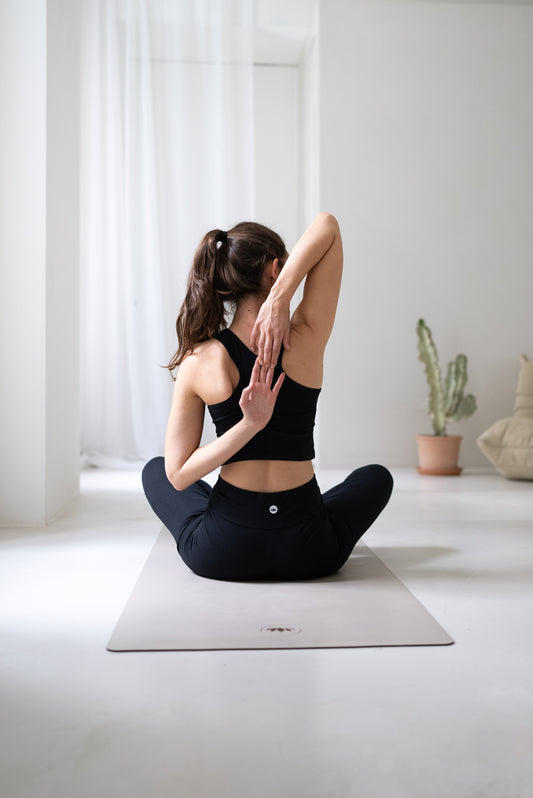
Sitting accompanies us in many life situations. It starts with breakfast, often continues on the way to work or school and of course continues to ...
Continue reading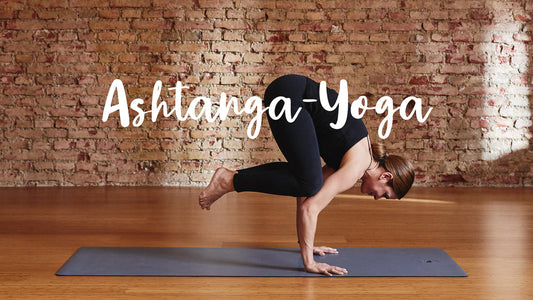
It is the supreme discipline among yoga styles: Ashtanga Yoga. Probably the hardest yoga style, it consists of six series, but often only the first...
Continue reading
There are no comments yet. Be the first to leave a comment!